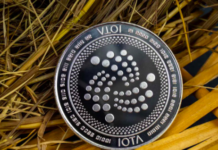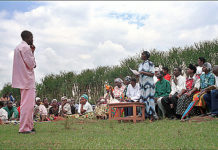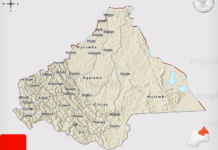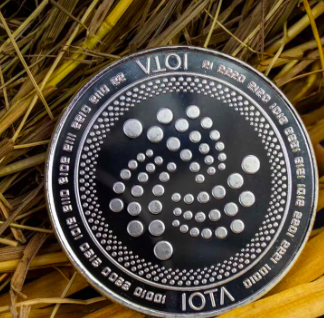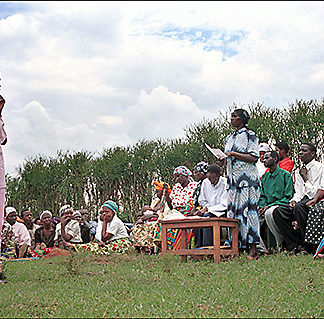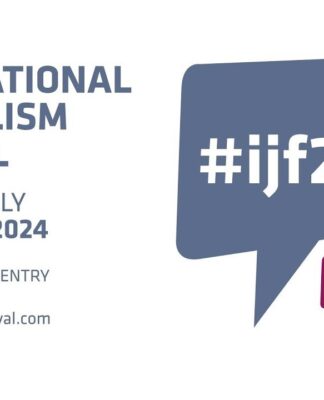In his book entitled Poor Numbers, Morten Jerven cautioned against taking African development statics at face value, given the high political and financial stakes attached to these numbers, as well as the lack of institutional mechanisms to prevent political interference in many countries. Few countries illustrate his case more starkly than Rwanda. As An Ansoms et al pointed out in an article in the print issue of ROAPE earlier this year, ‘Statistics versus livelihoods: questioning Rwanda’s pathway out of poverty’ , the Rwandan government has used its record on poverty reduction and economic growth to legitimize its authoritarian rule and to deflect criticism of its human rights record, just as the previous regime had done up until 1990. Furthermore, Rwanda’s spectacular recovery after the genocide has made it somewhat of a “donor darling”, and has enabled the government to attract significant foreign resources in the form of aid from donors desperate to claim a share in this African success story.
Yet, questions have been mounting in recent years about the reality and sustainability of the “Rwandan miracle”, given the heavy-handed nature of the state-led agricultural transformation project (Dawson et al. 2016), and the government’s propensity for debt-financed investments in unproductive prestige projects, such as the Kigali Convention Centre. These questions came to a head in September 2015, when the National Institute of Statistics of Rwanda (NISR) published a poverty profile (NISR, 2015) based on the most recent household budget survey (EICV4 by its French acronym). The report claimed that the proportion of Rwandans living below the poverty line had fallen from 45% in 2010 to 39% in 2014, after a string of similarly successful decreases in the previous surveys. Two months later, Filip Reyntjens published a critique, claiming that the “decrease” in poverty had been artificially engineered by NISR by changing the type of poverty line used, from an “average” consumption basket based on actual consumption patterns of poor Rwandan households, to a “minimum” or “optimal” consumption basket, containing mostly highly caloric and inexpensive food types.
The change is not in itself problematic, as the choice of a poverty line is always, to some extent, arbitrary and there are many different acceptable ways to define a poverty line. The normative minimum consumption basket adopted by NISR is one such way. However, to make trend comparisons, all experts agree that it is crucial to use consistent methodologies, assumptions and definitions across time. Reyntjens claimed that had they done that, they would have found the proportion of people living below the minimum poverty line to have increased by 6 percentage points between 2010 and 2014. Unfortunately, Reyntjens never published the syntax files he used to compute his estimate. Neither did NISR accept to publish its own syntax files. Without this key piece of evidence, the debate has never been closed from a technical point of view, as it is impossible to show convincingly whether poverty has actually increased or decreased in Rwanda between 2010 and 2014.
We hope to contribute to settling this issue by publishing open, transparent and verifiable syntax files built using a publicly available dataset, which can be downloaded from NISR’s own microdata catalogue on its website (the two syntax files can be opened with .txt notepad or STATA software here). There are many ways to compute these things and there are innumerable adjustments and assumptions that must be made to arrive at an aggregate number. Consequently, it is difficult to replicate exactly the official estimates without access to the original syntax files. However, we hope that by submitting these to public scrutiny, such differences can be ironed out in an open and transparent manner, and any mistakes can be corrected to arrive at an estimate that all parties can accept. In constructing these estimates, our main priority has been to ensure consistency between the two surveys. We therefore try to use exactly the same code and assumptions in both years wherever possible. Below, we provide an overview of the key parameters and assumptions that entered the construction of these indices. Since there are several different poverty lines that have been generated by now, we decided to compute trends for all of them, namely:
- Average consumption basket: representing the minimum amount required to consume 2,500 kcal per day (adjusted for age and gender), using prevailing culinary habits of poor Rwandan households in 2001. This was the official poverty line used in 2001, 2005, 2010.
- Updated average basket: representing the minimum amount required to consume 2,500 kcal per day (adjusted for age and gender), using prevailing culinary habits of poor Rwandan households in 2014. This was the new poverty line computed by NISR in 2014, which should have been used in EICV4, but was never used because it was deemed too high.
- Minimum consumption basket: representing the minimum amount required to consume 2,500 kcal per day (adjusted for age and gender), using optimal (i.e. cheap and highly caloric) food types. This was the official poverty line used in 2014 (EICV4).
- Reyntjen’s poverty line: Reyntjens argued that since the minimum consumption basket was 19% lower than the updated average basket, trend comparisons with 2010 should have been made using a poverty line that was 19% lower than the one used in 2010.[1] For this poverty line, we did not construct a food basket, but simply calculated 81% of the figure from the total poverty line computed from the average consumption basket.
In all consumption baskets, the quantities and caloric values are kept constant across surveys. Prices for each item are given as the national median price across regions and across months, as reported in the auto-consumption module of the EICV survey (see table 3 below). Consumption aggregates have been adjusted for spatial and temporal price differences using a Laspeyres index (see table 2 below). The Laspeyres index was chosen because it yielded estimates that were closest to official poverty estimates in EICV3 for the average basket. The choice of price index does not affect the conclusions of this blogpost.
The results are reported in table 1 below. All poverty lines yield similar trends when used consistently over time, indicating that poverty increased between 5% and 7% points between 2010 and 2014. All changes are statistically significant at the 5% level.
It should be noted that our results differ from those obtained by simply updating the poverty line for inflation using CPI data, as was done by NISR in their 2016 trend report (NISR, 2016). In principle, if the data are of good quality and sufficiently disaggregated, both methods should be equivalent and should not yield significantly different results. This therefore raises questions about the quality / reliability of official CPI data, and/or the quality of price data collected by the EICV. In either case, this would undermine our ability to correctly estimate poverty levels in Rwanda. The discrepancies found here should invite us to more closely scrutinize official statistics coming out of the Rwandan statistical office. GDP growth figures appear to be incompatible with the findings of the EICV survey, given than agriculture still accounts for about one third of GDP and two thirds of the labour force.
Tables
Table 1: Summary of poverty lines and poverty rates
| Average basket | Updated basket | Minimum basket | Reyntjen’s poverty line | |||||
| 2010 | 2014 | 2010 | 2014 | 2010 | 2014 | 2010 | 2014 | |
| Share of non-food[2] (% of total cons.) | 31 | 34.8 | – | |||||
| Total caloric intake (kcal/ adult/ day) | 1346 | 1215 | 1212 | – | ||||
| Total food cost per pers./year (Rwf) | 96,797 | 121,795 | 98,069 | 125,504 | 77,559 | 101,116 | – | – |
| Non-food component (Rwf/ pers/year) | 43,489 | 54,720 | 52,344 | 66,987 | 41,397 | 53,899 | – | – |
| Total poverty line (Rwf/ pers/ year) | 140,286 | 176,515 | 150,413 | 192,491 | 118,956 | 155,015 | 113,632 | 142,977 |
| Poverty rate (% of pop< tot. pov. Line) | 45.2 | 50.2 | 49.2 | 55.8 | 35.2 | 42.2 | 32.5 | 37.1 |
| Change in poverty rate | +5* | +6.6* | +7* | +4.6* | ||||
| *Change is statistically significant at 5% level | ||||||||
Table 2: Laspeyres price index by quarter and province (computed from price data in auto-consumption file)
| 2010 | Kigali City | Southern | Western | Northern | Eastern |
| First quarter | 1.47 | 0.98 | 0.89 | 0.98 | 1.14 |
| Second quarter | 1.31 | 0.98 | 0.92 | 0.96 | 1.05 |
| Third quarter | 1.38 | 0.98 | 0.92 | 0.98 | 1.13 |
| Fourth quarter | 1.31 | 0.98 | 0.92 | 1.00 | 1.14 |
| 2014 | Kigali City | Southern | Western | Northern | Eastern |
| First quarter | 1.22 | 0.93 | 1.01 | 0.96 | 1.09 |
| Second quarter | 1.20 | 0.95 | 0.96 | 0.91 | 1.08 |
| Third quarter | 1.27 | 0.98 | 1.06 | 1.05 | 1.04 |
| Fourth quarter | 1.14 | 0.92 | 1.07 | 0.99 | 1.02 |
Table 3: Food baskets used to compute poverty lines
| PRODUCE NAME | KCAL/ 100G | PRICE[3] | QUANTITY CONSUMED (KG/ ADULT EQUIVALENT PER DAY) | |||
| AVERAGE BASKET | UPDATED BASKET | MINIMUM BASKET | ||||
| both years | 2010 | 2014 | both years | both years | both years | |
| Sweet potato | 92 | 80 | 100 | 0.4033 | 0.3114 | 0.0915 |
| Irish Potato | 67 | 120 | 150 | 0.1763 | 0.1257 | 0.0242 |
| Banana – cooking (Inyamunyo) | 75 | 120 | 150 | 0.0573 | 0.0783 | 0.0227 |
| Dry beans | 341 | 300 | 400 | 0.1130 | 0.0758 | 0.0758 |
| Cassava (root) | 109 | 100 | 150 | 0.0410 | 0.0694 | 0.0694 |
| Cassava (flour) | 338 | 200 | 300 | 0.0134 | 0.0391 | 0.0063 |
| Sorghum juice(Ubushera) | 173 | 150 | 180 | 0.0000 | 0.0000 | 0.0000 |
| Tomato | 17 | 200 | 200 | 0.0106 | 0.0146 | 0.0146 |
| Corn (flour) | 363 | 300 | 350 | 0.0100 | 0.0184 | 0.0012 |
| Cabbages | 19 | 100 | 100 | 0.0207 | 0.0172 | 0.0172 |
| Local Banana beer | 48 | 300 | 300 | 0.0096 | 0.0000 | 0.0000 |
| Avocado | 119 | 90 | 100 | 0.0036 | 0.0143 | 0.0494 |
| Amarante (small leafed green) | 22 | 100 | 150 | 0.0124 | 0.0150 | 0.0150 |
| Local sorghum beer(ikigage) | 173 | 150 | 180 | 0.0150 | 0.0000 | 0.0000 |
| Cassava (fermented) | 362 | 150 | 200 | 0.0056 | 0.0113 | 0.1097 |
| Dry maize (grain) | 356 | 180 | 240 | 0.0103 | 0.0138 | 0.0225 |
| Eggplant | 21 | 150 | 200 | 0.0070 | 0.0082 | 0.0082 |
| Cassava leaves | 53 | 150 | 200 | 0.0068 | 0.0093 | 0.0093 |
| Local rice | 280 | 500 | 600 | 0.0027 | 0.0092 | 0.0035 |
| Tarot/amateke | 86 | 100 | 150 | 0.0098 | 0.0189 | 0.0476 |
| Maize (fresh) | 36 | 100 | 150 | 0.0065 | 0.0000 | 0.0000 |
| Fresh milk | 61 | 150 | 200 | 0.0010 | 0.0062 | 0.0062 |
| Fresh bean | 53 | 200 | 250 | 0.0002 | 0.0000 | 0.0000 |
| Banana fruit (Imineke) | 60 | 150 | 200 | 0.0038 | 0.0056 | 0.0028 |
| Sorghum (flour) | 343 | 300 | 350 | 0.0031 | 0.0051 | 0.0075 |
| Onion | 24 | 250 | 325 | 0.0017 | 0.0024 | 0.0024 |
| Curdled Milk | 75 | 200 | 200 | 0.0007 | 0.0053 | 0.0053 |
| Local banana juice | 48 | 200 | 200 | 0.0000 | 0.0035 | 0.0020 |
| Groundnut flour | 387 | 900 | 1000 | 0.0004 | 0.0000 | 0.0000 |
| Sorghum | 343 | 250 | 250 | 0.0253 | 0.0028 | 0.0143 |
| Amarante (large leafed green) | 22 | 100 | 170 | 0.0039 | 0.0028 | 0.0028 |
| Pumpkin | 19 | 100 | 100 | 0.0068 | 0.0058 | 0.0058 |
| Pineapple | 26 | 100 | 125 | 0.0002 | 0.0013 | 0.0013 |
| Carrot | 38 | 200 | 250 | 0.0003 | 0.0011 | 0.0011 |
| Papayas | 26 | 100 | 150 | 0.0006 | 0.0014 | 0.0014 |
| Mangos | 45 | 100 | 125 | 0.0000 | 0.0022 | 0.0074 |
| Beef meat | 150 | 1400 | 1400 | 0.0006 | 0.0016 | 0.0000 |
| Green pea (fresh) | 37 | 400 | 500 | 0.0006 | 0.0000 | 0.0000 |
| Fish (fresh / frozen) | 49 | 1000 | 1020 | 0.0005 | 0.0000 | 0.0000 |
| Eggs | 139 | 70 | 240 | 0.0007 | 0.0009 | 0.0009 |
| Guava | 17 | 70 | 100 | 0.0002 | 0.0000 | 0.0000 |
| Soya (dry) | 335 | 300 | 400 | 0.0000 | 0.0004 | 0.0004 |
| Yams/Ibikoro | 109 | 130 | 160 | 0.0000 | 0.0104 | 0.0104 |
| Pepper | 17 | 250 | 300 | 0.0002 | 0.0000 | 0.0000 |
| Plums | 24 | 425 | 600 | 0.0001 | 0.0000 | 0.0000 |
| Pork meat | 220 | 1150 | 1400 | 0.0000 | 0.0003 | 0.0000 |
| Wheat (flour) | 364 | 350 | 450 | 0.0001 | 0.0000 | 0.0000 |
| Goat meat | 164 | 1500 | 1800 | 0.0002 | 0.0000 | 0.0000 |
| Orange (local) | 34 | 200 | 200 | 0.0000 | 0.0002 | 0.0002 |
| String bean | 32 | 200 | 200 | 0.0068 | 0.0000 | 0.0000 |
| Soya (fresh) | 405 | 200 | 250 | 0.0023 | 0.0000 | 0.0000 |
| Green pea (dry) | 339 | 500 | 700 | 0.0010 | 0.0000 | 0.0000 |
| Ground nuts (peanuts) | 567 | 800 | 1000 | 0.0009 | 0.0001 | 0.0001 |
| Fish (dry / smoked) | 199 | 500 | 500 | 0.0000 | 0.0127 | 0.0127 |
| Other Meats | 126 | 550 | 800 | 0.0000 | 0.0000 | 0.0005 |
| Bread | 261 | 239 | 303 | 0.0011 | 0.0000 | 0.0000 |
| Imported rice | 363 | 460 | 583 | 0.0014 | 0.0000 | 0.0000 |
| Palm oil | 884 | 668 | 846 | 0.0036 | 0.0000 | 0.0000 |
| Sugar (local) | 380 | 500 | 634 | 0.0027 | 0.0000 | 0.0000 |
The authors of this article have asked for anonymity.
Featured Photograph: Parc National des Volcans, Rwanda. August 4, 2005
References
Reyntjens, F. 2015. “Lies, Damned Lies and Statistics: Poverty Reduction Rwandan-style and How the Aid Community Loves It.” Blog of 3 November 2015 posted on www.africanarguments.org.
NISR. 2015. Rwanda Poverty Profile Report 2013/2014: Results of Integrated Household Living Conditions Survey. Kigali: NISR.
An Ansoms, Esther Marijnen, Giuseppe Cioffo, and Jude Murison, “Statistics versus livelihoods: questioning Rwanda’s pathway out of poverty”, Review Of African Political Economy Vol. 44 , Iss. 151, 2017.
National Institute of Statistics of Rwanda (NISR), Poverty Trend Analysis Report, June 2016.
Jerven, Morten. Poor numbers: how we are misled by African development statistics and what to do about it. Cornell University Press, 2013.
Dawson, Neil, Adrian Martin, and Thomas Sikor. ‘Green revolution in sub-saharan Africa: Implications of imposed innovation for the wellbeing of rural smallholders.’ World Development 78 (2016): 204-218.
Notes
[1] Note that Reyntjens argument is not strictly speaking correct, since it would still require us to compare two different consumption baskets. To be methodologically sound, the 19% reduction would thus need to be applied to the same basket in both years, as we are doing here.
[2] In the average consumption basket, the non-food component is computed based on the average food share for households in the 7th decile in 2001. In the updated and minimum baskets, the non-food components are computed based on the average food share for households in the 5th decile in 2014.
[3] National median price of product as reported in the auto-consumption module.










